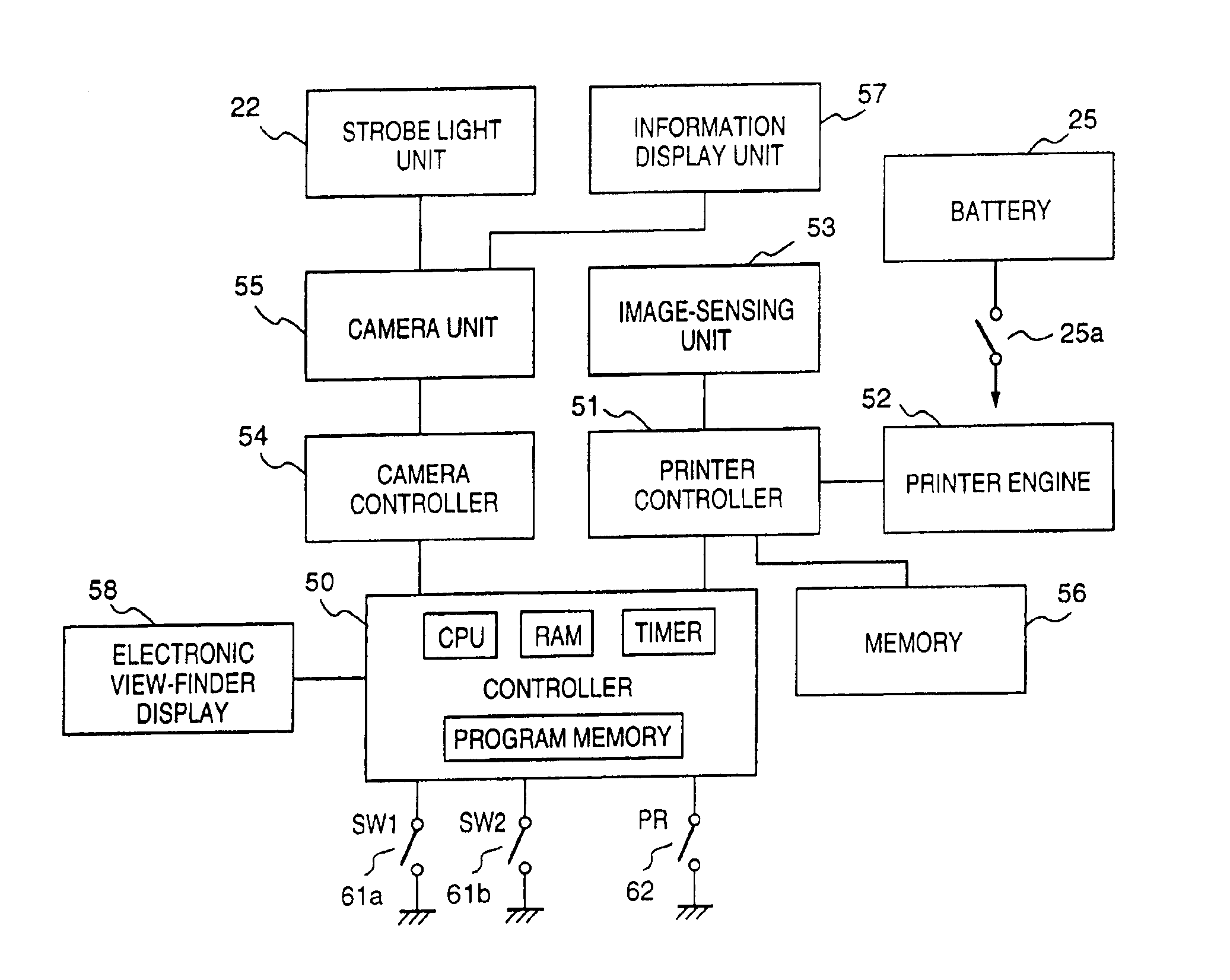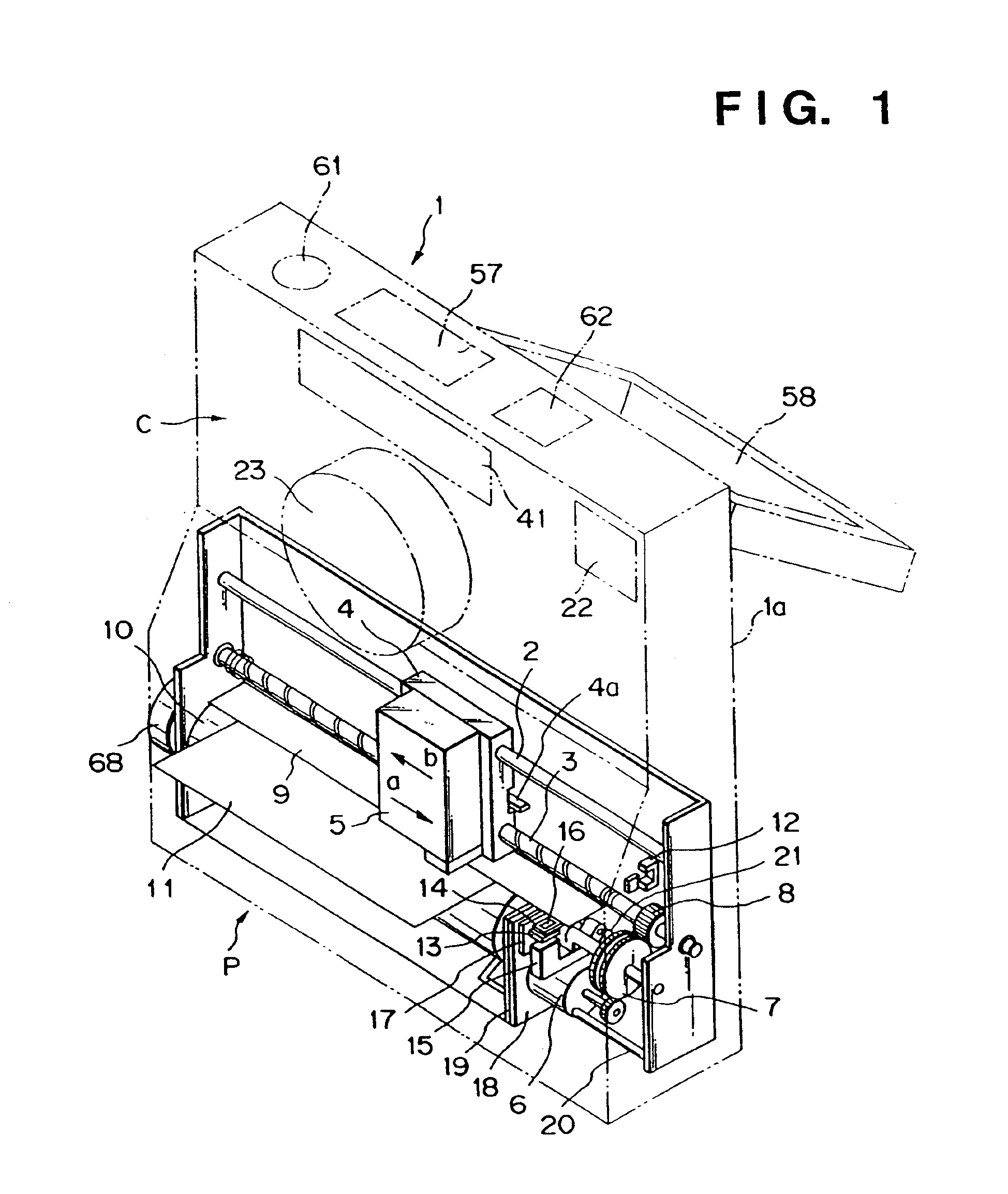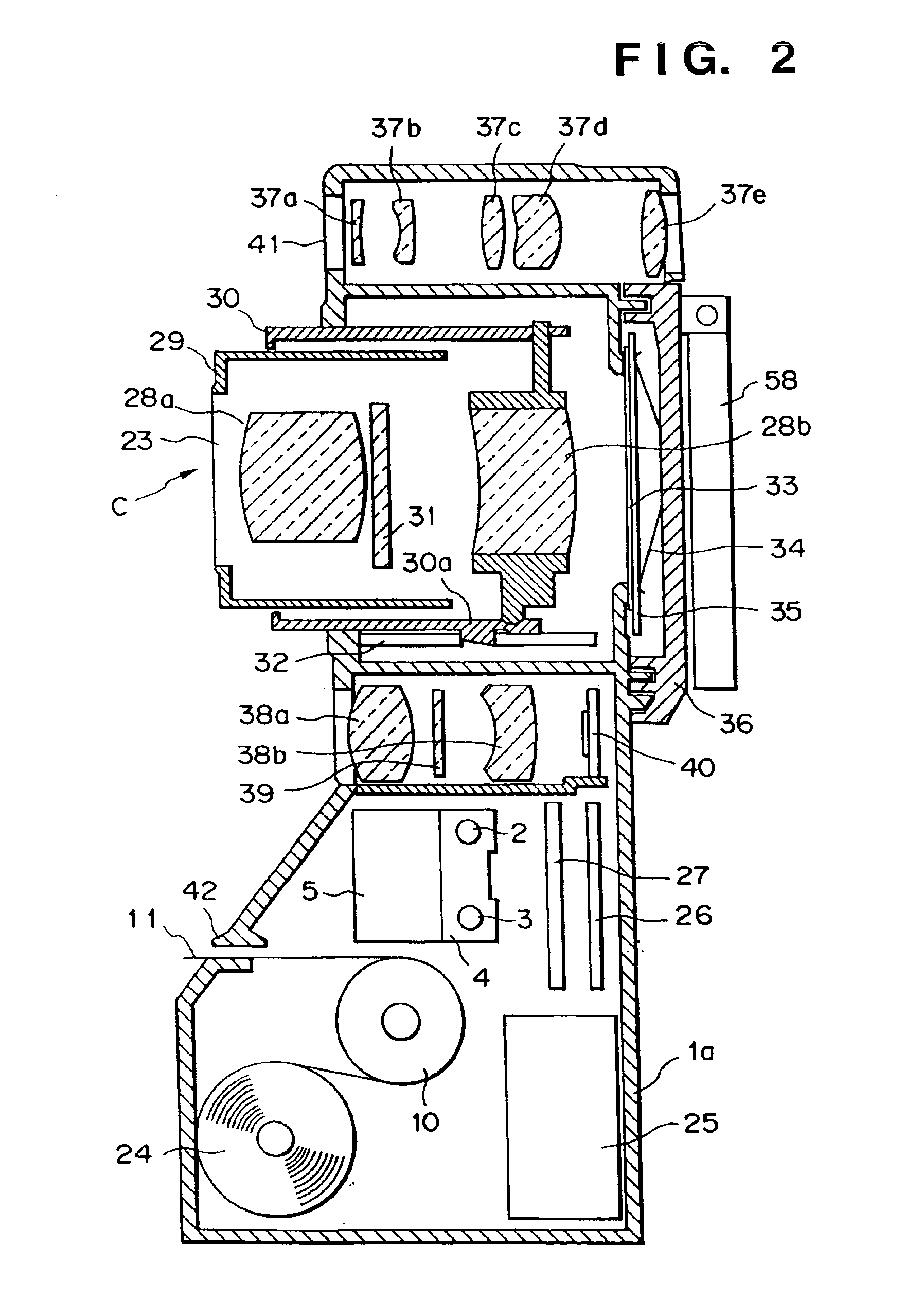Printer-built-in image-sensing apparatus and electric-consumption control method thereof
a technology of which is applied in the field of printing-built-in image-sensing apparatus and electric consumption control method thereof, can solve the problems of inability to perform extra printing, inability to provide excellent printout, and inability to obtain copied image(s) to be further degraded in image quality, so as to prevent poor printout
- Summary
- Abstract
- Description
- Claims
- Application Information
AI Technical Summary
Benefits of technology
Problems solved by technology
Method used
Image
Examples
first embodiment
[First Embodiment]
[0041]A first embodiment of the present invention will be described with reference to FIGS. 1 to 5.
[0042]FIG. 1 is a perspective view showing the external view of a printer-built-in camera according to the first embodiment. FIG. 1 especially shows a structure of an ink-jet printer P. FIG. 2 is a cross-sectional view showing a construction of the printer-built-in camera of the present embodiment. FIG. 3 is a block diagram showing a main construction of the printer-built-in camera of the present embodiment. FIGS. 4 and 5 are flow-charts showing processing in the printer-built-in camera of the present embodiment.
[0043]The camera of this embodiment is a multifunction camera having a still camera C and a printer P which prints an image sensed by the still camera C. The printer P employs an ink-jet printer, and the still camera C employs a camera using a silver chloride film. However, the present invention is not limited to this arrangement but is applicable to other cam...
second embodiment
[Second Embodiment]
[0072]Next, the printer-built-in camera (multifunction camera) according to a second embodiment will be described with reference to FIGS. 7 to 12.
[0073]In the multifunction camera of the second embodiment, the image-sensing device which obtains image information for printing by the printer P is provided on an optical path branched from the image-sensing optical system which forms the image on a silver chloride film. Thus image information can be obtained with approximately the same view angle as that of an image recorded on a silver chloride film.
[0074]More specifically, after the image recorded on the silver chloride film has been developed and print processed, an image with approximately the same view angle as that of an image recorded on the silver chloride film can be print-outputted. Thus the multifunction camera can produce a printout closer to a printout from the silver-chloride film.
[0075]Next, the print operation by the printer P while a capacitor in the ...
third embodiment
[Third Embodiment]
[0101]Next, a third embodiment of the present invention will be described. in this embodiment, when printing is instructed, power supply to the electronic view finder (118) is stopped, thus preventing an increase of electric consumption at the battery 25 (123).
[0102]The processing at this time is shown in the flow-charts of FIGS. 14 and 15. Note that the hardware construction of the multifunction camera of the third embodiment is the same as that of the first or second embodiment except that strobe light emission (S9) is not performed. Therefore the explanation of the construction will be omitted.
[0103]At step S51, when the print button 62 is pressed, the process proceeds to step S52, at which point the carriage 4 is moved to the home position and preparatory discharging is performed (S52). At step S53, the print operation is started. The image information stored in the memory 56 is outputted to the printer engine 52, and printing is performed. Next, at step S54, t...
PUM
 Login to View More
Login to View More Abstract
Description
Claims
Application Information
 Login to View More
Login to View More - R&D
- Intellectual Property
- Life Sciences
- Materials
- Tech Scout
- Unparalleled Data Quality
- Higher Quality Content
- 60% Fewer Hallucinations
Browse by: Latest US Patents, China's latest patents, Technical Efficacy Thesaurus, Application Domain, Technology Topic, Popular Technical Reports.
© 2025 PatSnap. All rights reserved.Legal|Privacy policy|Modern Slavery Act Transparency Statement|Sitemap|About US| Contact US: help@patsnap.com



